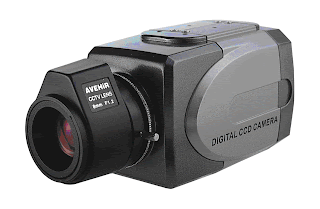Using IP / Digital Video for Security and Surveillance at Your Company

Long before computers and the digital era, video played an important role in
security and surveillance. There were CCTV (Closed Circuit TV) cameras connected
by coaxial cables to a desk or room full of television monitors, and possibly
also to one or more VCRs, whose tapes had to be changed — or (to the frequent
dismay of the cops on television shows) reused several times a day
Over the past decade, however, digital video, a.k.a. IP (as in Internet
Protocol) video, has been replacing traditional analog CCTV for security and
surveillance tasks — and also creating new security/surveillance markets and
applications, thanks to constantly improving product price/performance, new
features. It is seeing greater understanding and acceptance by integrators,
installers and facility security managers.
A growing number of organizations, from businesses, hospitals and banks
through schools, retail establishments, gas stations, cities — and any
security-conscious organization with parking lots or parking garages — is using
video as part of its security and surveillance solution.
For example, Cisco reports its IP video products are used by places like
Amtrak’s maintenance yards in California, Elon University and the Joliet,
Illinois police department. Surveillance reseller Security Management Systems,
Inc. has provided video security solutions for corporations and healthcare
organizations including Time-Warner, Pfizer, Memorial Sloane-Kettering and the
Empire State Building.
In addition to classic security monitoring, video surveillance can be used to
help make weather-based decisions, like “Call the snow-plowing company? Or
decide to close the school, office, etc.?”
Other areas where digital video is replacing analog CCTV include where
organizations need more detail, like seeing faces or license plates, matching
faces with clothing — perfect for parking lots, banks, hospitals, stores and
elsewhere.
Camera(s) Network
Monitoring
control and storage.
Deploying Digital Cameras for Surveillance and Security
Cameras for use in security/surveillance are either fixed, or PTZ — remotely
controllable Pan/Tilt (changing the viewing direction) and Zoom. In today’s
digital cameras, PTZ may be either physical, or, given a wide-enough-angle lens,
virtual, selecting the view area from the image similar to how pocket cameras do
“digital zoom.” Physical PTZ can cost more and require more power, but can
sustain better image quality as you zoom in.
Security/surveillance cameras come in a range of prices and capabilities,
from simple indoor fixed-view ones to PTZ cameras with enclosures, suitable for
use in a range of environmental/weather conditions including freezing
temperatures, rain, wind, dirt, snow and ice.
“‘Dome’ cameras are dominant in any customer-facing location where aesthetics
is important, like hospitals, offices or stores,” says Vance Kozik, director of
Product Marketing, IP Surveillance, D-Link. On the other hand, “‘Box cameras’ —
the rectangular shapes that people usually think of — can make it easier to
change to a different lens than what came with the camera. And ‘cube cameras’ —
which are really less-deep rectangles — are popular in the consumer space.”
The Network: Fewer, Shorter Wires
Instead of requiring a dedicated coax cable “run” for each CCTV camera
running to the monitoring location (the “star” topology), digital IP cameras can
share the same data network
that data and digitized voice are running on. Even if a separate physical
network is used, the cameras can still share a common backbone. Either way, the
cameras simply connect to the nearest part of the LAN, like a string of
Christmas tree lights.
Monitoring, Control and Storage
The Benefits of Digital Instead of Analog
There are other factors to consider other than the price to buy and install. Vendors say using digital technology means that IP video gear can do a lot that analog couldn’t (or not easily and affordably), including:
- Image quality and higher resolution, for more usable video. “The advent of 720 and 1080p HD in security cameras has revolutionized the industry,” says James Marcella, director of Technical Services, Axis Communications.
- Resolution is higher. “Analog is based on the NTSC format, with maximum
resolution of 720x480,” says D-Link’s Kozik. “With IP, you can go beyond analog
video resolution — now, to 720 or 1080p Hi-Def and multimegapixel resolution.
From example, 3 megapixels is nine times that of the best analog or VGA camera,
and even the lowest HD camera has at least a 1 megapixel sensor. If you switched
from analog to IP video cameras without getting more resolution, you wouldn’t
see all the benefits.”
- The system can send, save only when the image changes, or act when a sensor
is triggered (by smoke, humidity, motion, etc.). These are all factors that
reduce bandwidth and storage requirements.
- Processing power in the camera. “Analytics like motion detectors let you
scale out digital cameras further — have more cameras — because the camera
rather than the recording device is now the workhorse.
- Local storage and action. “Almost all our cameras let you put an SD or
MicroSD card in, for standalone use or as backup for capture in case there’s a
problem with the network or the central system,” notes D-Link’s Kozik.
- Remote access/viewing, including from smartphones and tablets. Not only by
IT/security staff, but also (with permission) police and first responders.
- Integrate with environmental monitoring (smoke, humidity, etc.).
- Initiating email or other messaging. Many cameras can be configured to issue an email or SMS (text message) alert when they detect an event.














No comments:
Post a Comment